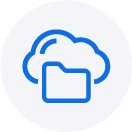Updated at: 2022-12-09 03:49:50
The rich client in AnyShare Family 7 has access to the SyncDisk. For your convenience, all the files and folders of a user are stored in their SycnDisk and the content will always be kept consistent between the premise and the cloud.
Before enjoying your SyncDisk, the first thing is to set the cache path on the page of Novice Guide. Considering you would miss it, we give you another option: right-click on the tray icon of AnyShare then go to SyncDisk→Settings→Cache one after another and click on Browse to set the path. Don’t forget to click on OK or Apply.
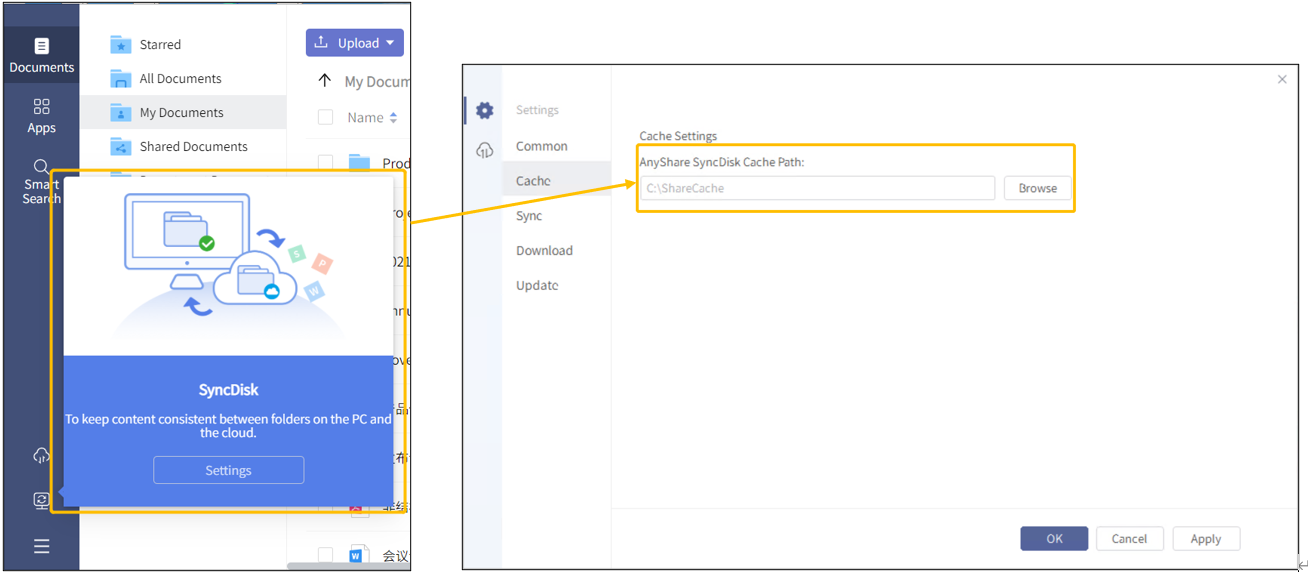
Set it through Novice Guide

Upload any file or folder by Direct or Indirect Connection mode.
Direct Connection: As shown in the image below, send desktop files to the SyncDisk.
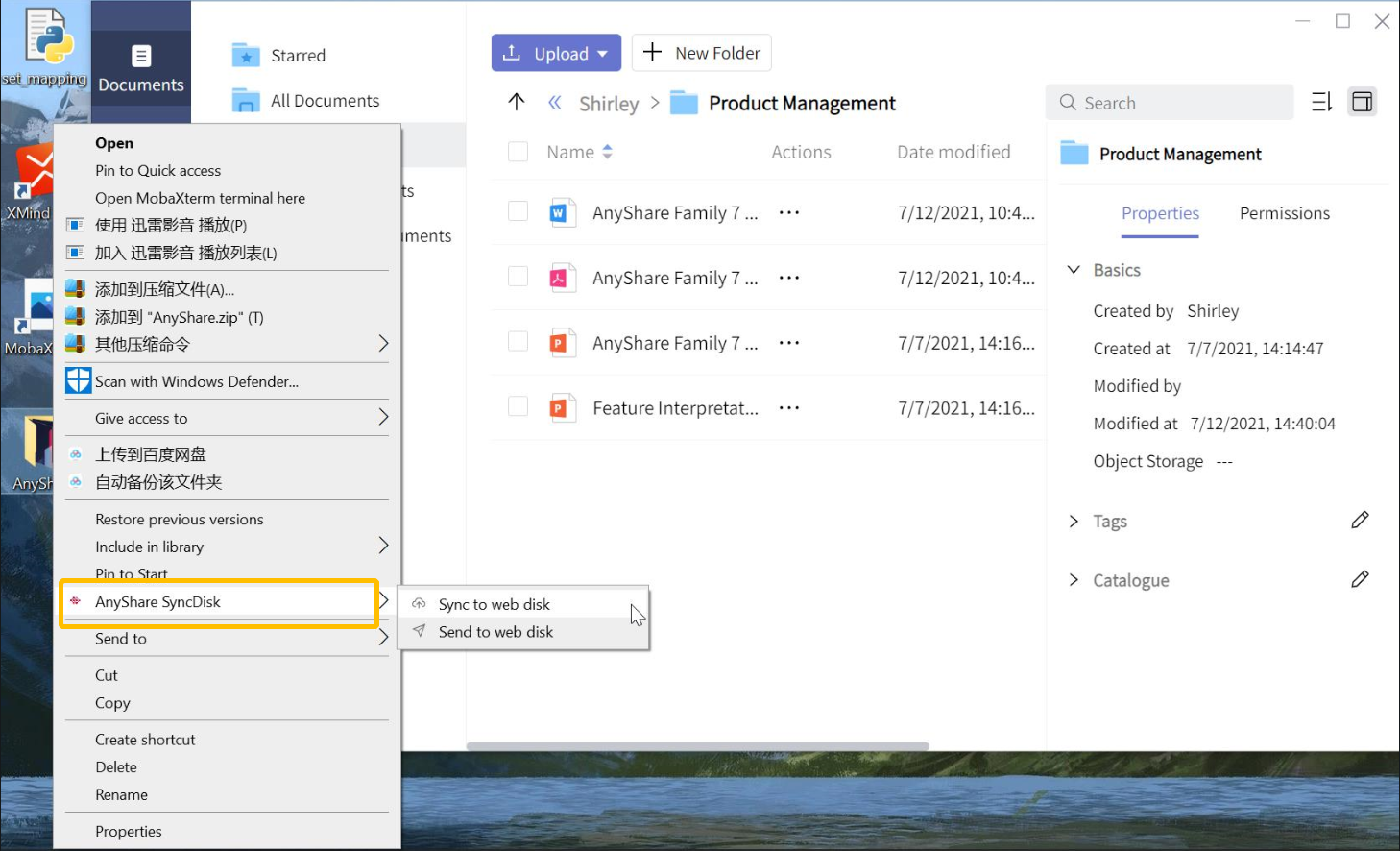
Indirect Connection: Drag things to or upload new files or folders in the SyncDisk
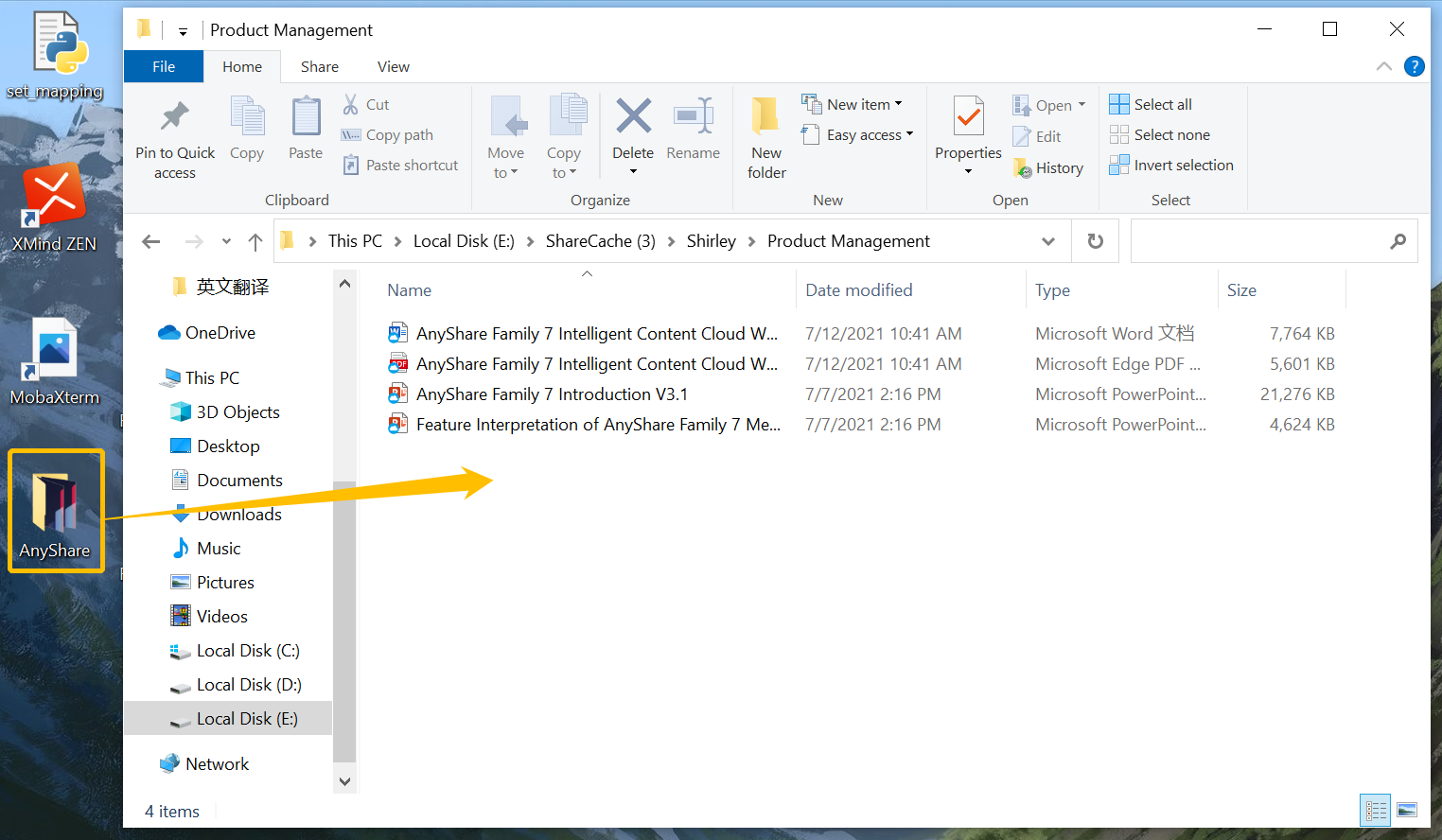
New
Edit files offline: When you edit a file offline, it will be automatically updated next time you log in to AnyShare.
Edit files after locking them: To avoid conflict files arising from actions like edit and save, you can lock a file before you edit it.
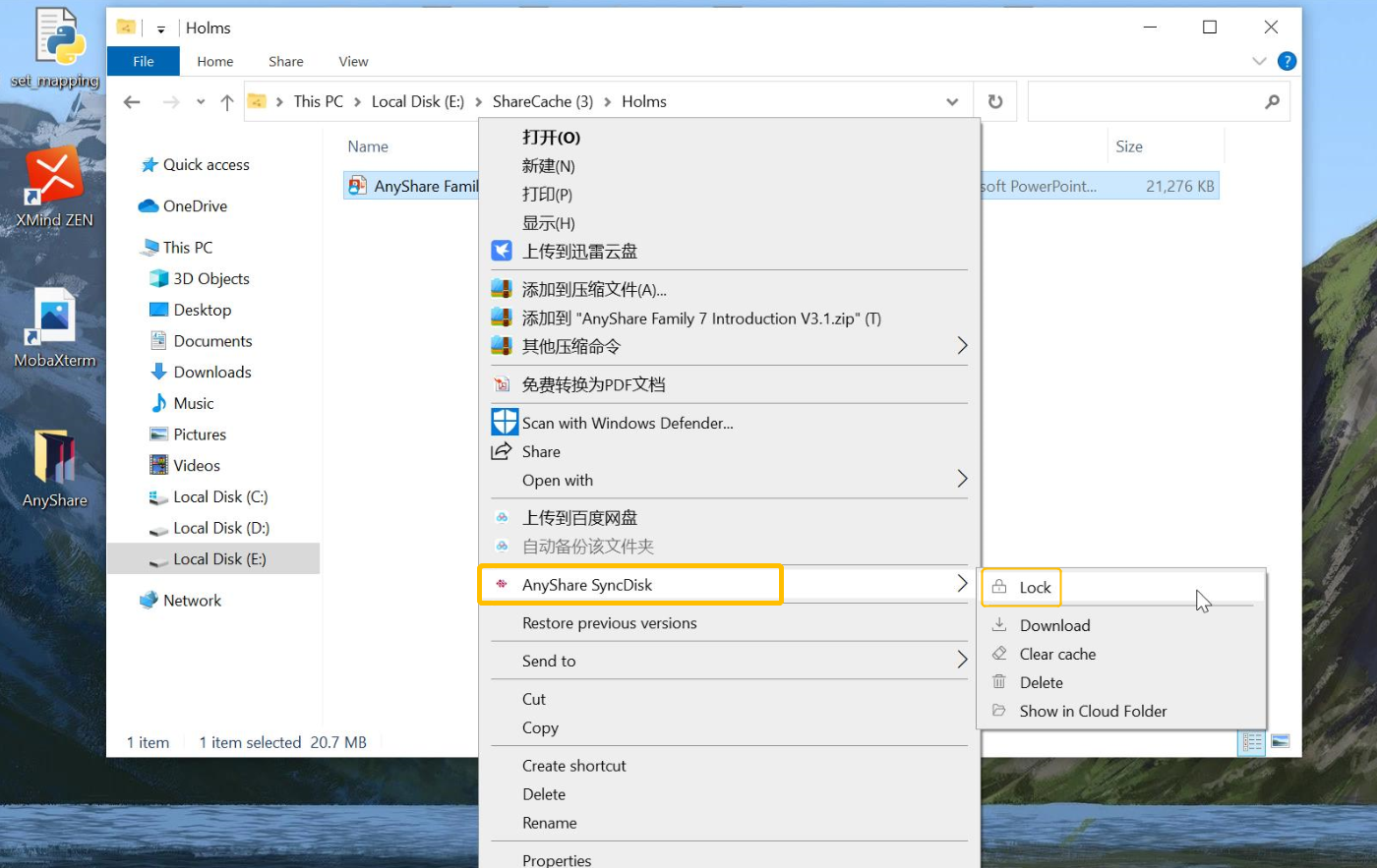
Download: You can select one or more files at one time and right-click your mouse to check [AnyShare SyncDisk] and click [Download].

Delete: You can select one or more files at one time and right-click your mouse to check [Delete ]. After that, you can do the restoration in Trash.
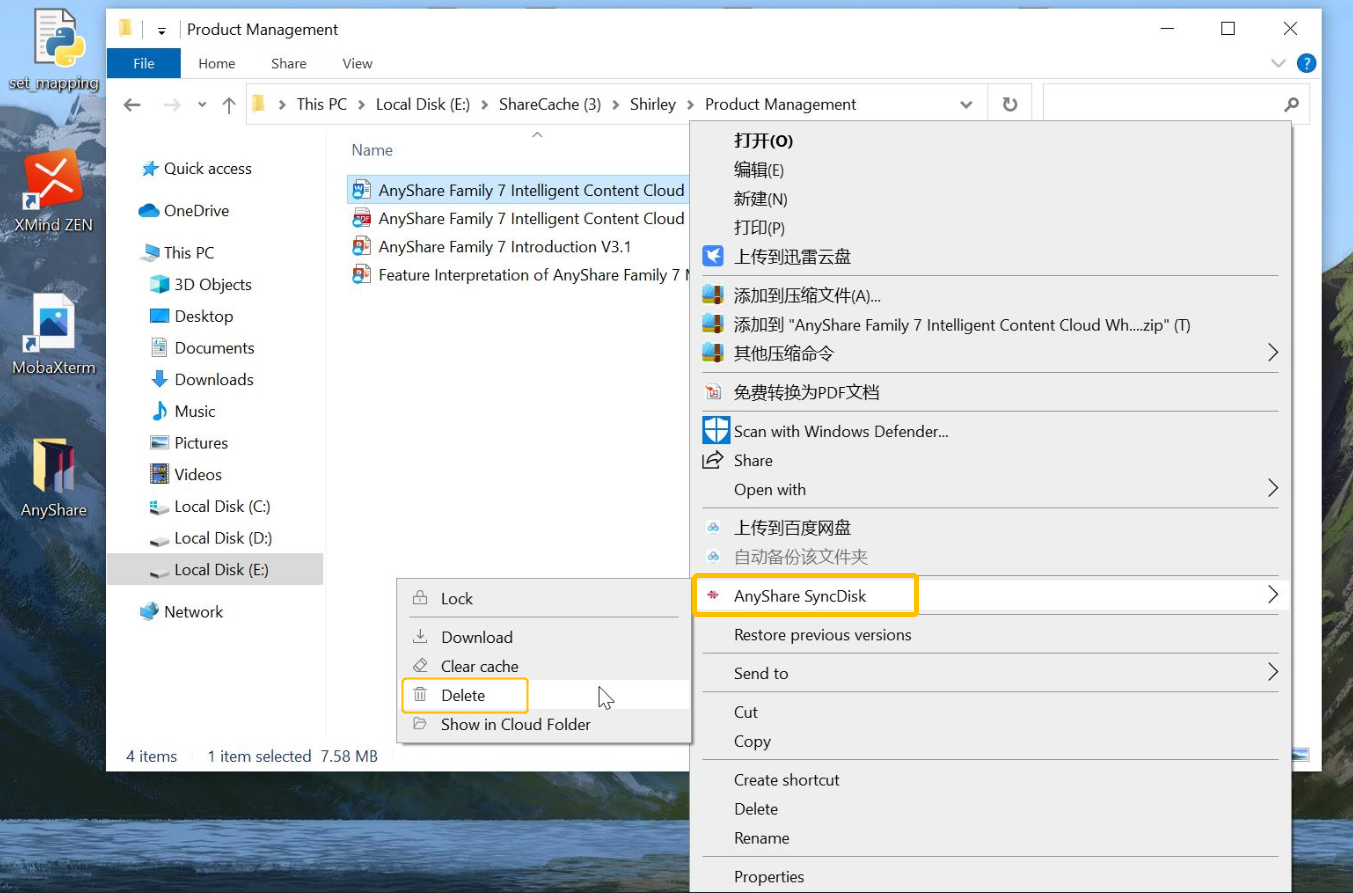
Besides, the right-click on Tray also serves the function of viewing the Sync Details and setting related configurations.
View Sync Details: When switching on this page, you can view files that are being synced, fail to be synced, and already synced. You can also pause or cancel a sync operation.

Sync local files or folders to the cloud: On the page [Settings]-[Sync], you can add local or disk directories which will be automatically synced to the cloud. Changes that happen to your local directories will be automatically synced to the cloud, vice versa.

Download content automatically: On the same page, you can also use [Auto-Downloads]. All you need is to set up a directory for receiving things downloaded. You can also curtail the downloads like only download files with a certain size scope or type by imposing restrictions. Folders that are not equipped with Auto-Downloads need downloading manually.
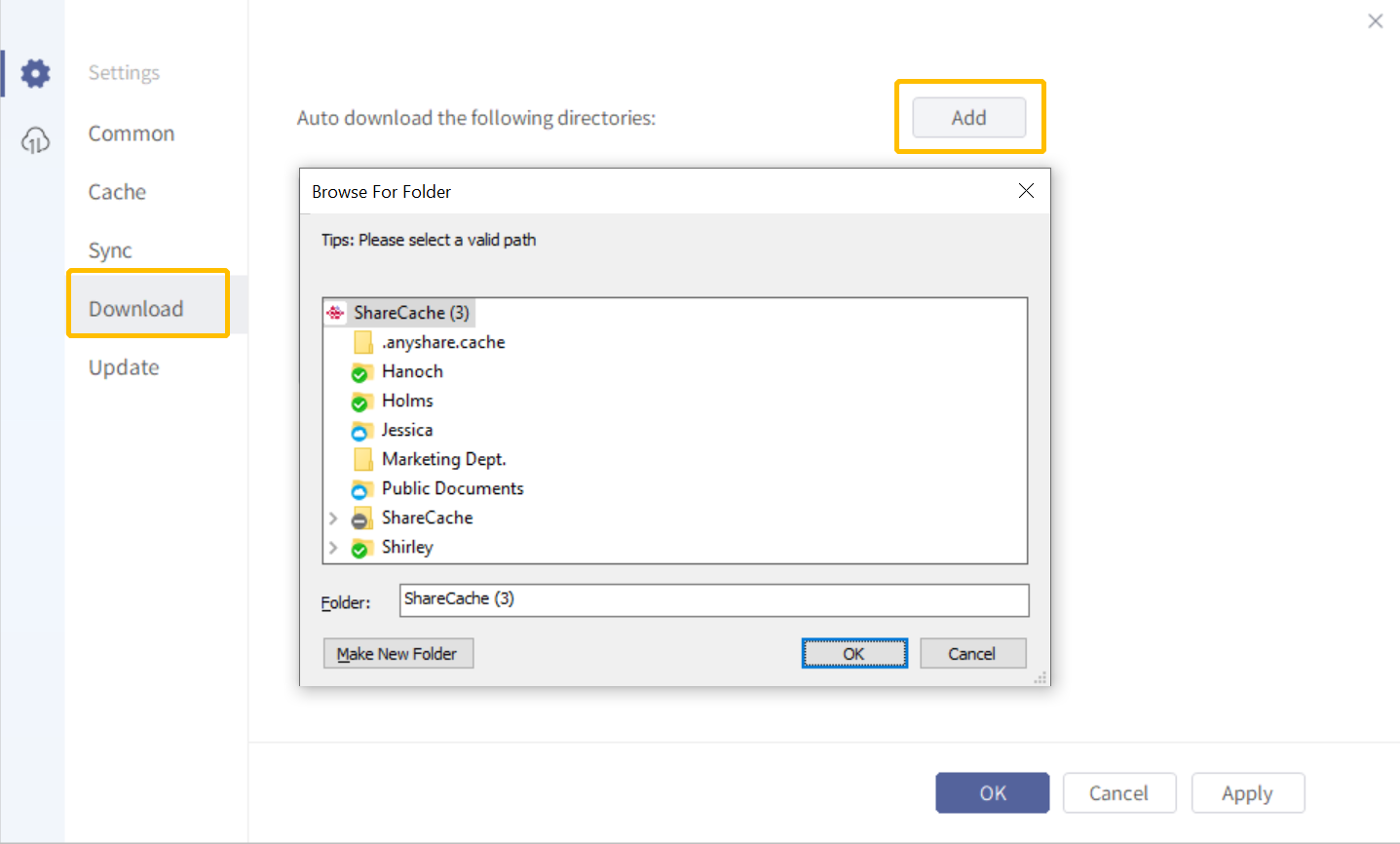
View AnyShare Version: You can view the current version of AnyShare and the system information by right-clicking on Tray and going to the page [About]. You will feel grateful and efficient when doing the trouble-shooting.

In summary, AnyShare Family 7 Desktop Client wins others due to the following pros:
Before enjoying your SyncDisk, the first thing is to set the cache path on the page of Novice Guide. Considering you would miss it, we give you another option: right-click on the tray icon of AnyShare then go to SyncDisk→Settings→Cache one after another and click on Browse to set the path. Don’t forget to click on OK or Apply.

Set it through Novice Guide

- Set it through the Tray
Upload any file or folder by Direct or Indirect Connection mode.
Direct Connection: As shown in the image below, send desktop files to the SyncDisk.

Indirect Connection: Drag things to or upload new files or folders in the SyncDisk

New
Edit files offline: When you edit a file offline, it will be automatically updated next time you log in to AnyShare.
Edit files after locking them: To avoid conflict files arising from actions like edit and save, you can lock a file before you edit it.

Download: You can select one or more files at one time and right-click your mouse to check [AnyShare SyncDisk] and click [Download].

Delete: You can select one or more files at one time and right-click your mouse to check [Delete ]. After that, you can do the restoration in Trash.

Besides, the right-click on Tray also serves the function of viewing the Sync Details and setting related configurations.
View Sync Details: When switching on this page, you can view files that are being synced, fail to be synced, and already synced. You can also pause or cancel a sync operation.

Sync local files or folders to the cloud: On the page [Settings]-[Sync], you can add local or disk directories which will be automatically synced to the cloud. Changes that happen to your local directories will be automatically synced to the cloud, vice versa.

Download content automatically: On the same page, you can also use [Auto-Downloads]. All you need is to set up a directory for receiving things downloaded. You can also curtail the downloads like only download files with a certain size scope or type by imposing restrictions. Folders that are not equipped with Auto-Downloads need downloading manually.

View AnyShare Version: You can view the current version of AnyShare and the system information by right-clicking on Tray and going to the page [About]. You will feel grateful and efficient when doing the trouble-shooting.

In summary, AnyShare Family 7 Desktop Client wins others due to the following pros:
- A complete Windows operating experience: We adopt the operating experience from Windows to reduce the learning cost of users.
- Ease of upload: No need to upload content manually when changes from edit and save are detected.
- Bilateral sync: To keep content latest, users can set cache directory, sync directory, and Auto-Downloads directory which are all synced bilaterally.
< Previous:
Next: >








